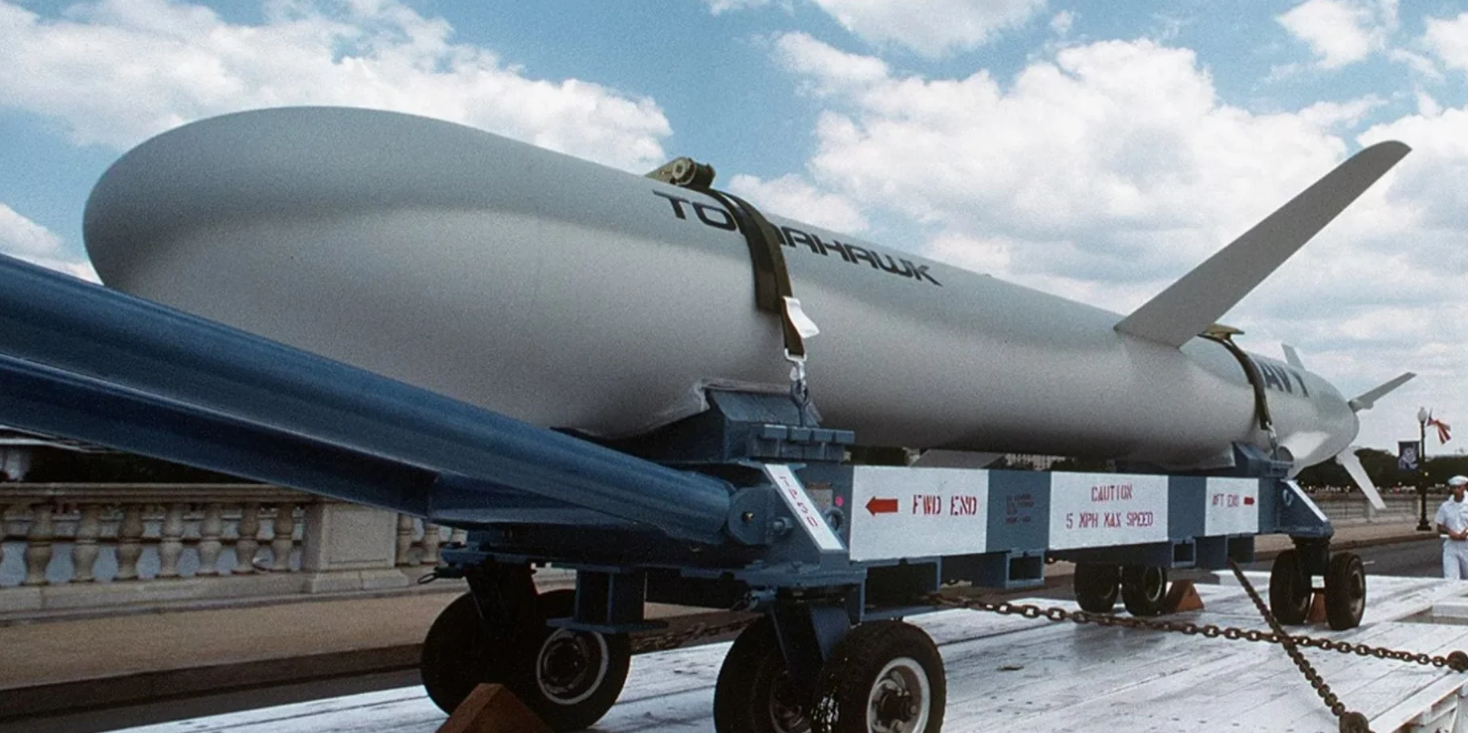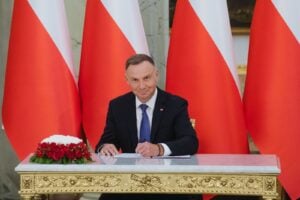Why Tomahawks are so scary: why the Kremlin has been afraid of them since the Soviet era
3 October 13:38
Ukraine is actively seeking to obtain the famous Tomahawk cruise missiles from the United States. Although a final decision has not yet been made, this prospect has already caused considerable concern in Russia. After Donald Trump’s loud statements in July 2025, the American media began discussing the possibility of transferring these missiles to Kyiv, which are capable of reaching targets in Moscow or St. Petersburg.
In September, the Tomahawk issue came to the fore again, especially after Volodymyr Zelenskyy’s positive meeting with Trump in New York. on September 28, Senator J.D. Vance confirmed that Ukraine had officially asked the United States to provide these missiles. However, according to him, the final decision will be made by Donald Trump, who, as Vance emphasized, will act primarily in the interests of the United States.
Why is Russia so concerned about the possible transfer of Tomahawks?
Tomahawks are long-range cruise missiles developed in the United States. Although they are not new, they were considered a serious deterrent against possible Soviet actions back in the Soviet era. Subsequently, these missiles became the main striking force during Operation Desert Storm and were used by the Americans in various conflicts – in Libya, Afghanistan, the Middle East, the former Yugoslavia, and, in particular, in 2025 – in Iran.
After the news of the possible deployment of US Tomahawks in Germany, Russia immediately threatened a possible “military response” through its Foreign Ministry. This was stated on July 11, 2024, on the sidelines of the BRICS summit by Deputy Foreign Minister Sergei Ryabkov.
Can Ukraine get a Tomahawk to strike Russia?
Ukraine’s attempts to obtain long-range Tomahawk missiles from the United States began during the Biden administration. on October 29, 2024, The New York Times reported that a secret part of the so-called Ukrainian “Victory Plan” contains a request for the supply of these missiles for the Armed Forces. According to speculation, Tomahawks could be a key element of the “non-nuclear deterrence package” mentioned in the document.
However, the American publication reported at the same time that the White House rejected this request. And after Donald Trump’s election victory and a wave of unpredictable statements from him, the prospect of missile deliveries seemed to be completely closed. But the situation began to change after the US president, according to media reports, realized that Vladimir Putin was misleading him and treating him with disdain. Against this backdrop, the American press started talking again about the potential transfer of Tomahawk to Ukraine.
In July 2025, Donald Trump demonstrated an unexpectedly stable and even pro-Ukrainian stance. During a meeting with NATO Secretary General Mark Rutte on July 14, he explicitly stated that the United States was ready, together with its allies, to provide Ukraine with serious weapons that could significantly change the balance of power. This signaled that the war in Ukraine is no longer just Biden’s war, but now Trump’s responsibility.
However, there is still no concrete information on what kind of weapons the United States is ready to provide. This was used by Western journalists and insiders who began to actively spread speculation – PAC-3, JASSM, JASSM-ER, and later Tomahawk appeared among the systems mentioned.
The Washington Post’s article claimed that Trump, impressed by the effectiveness of the Tomahawk in the recent operation against Iran, was seriously considering providing it to Ukraine. It was noted that even if these missiles are not yet on the open lists of American aid, they could easily be added later. But it is worth clarifying: this was not an official report, but a column in the Opinions section, written by the well-known publicist David Ignatius. Although his name carries weight in journalistic circles, the article still relies on anonymous sources and cannot be considered a reliable confirmation of the White House’s plans.
In September 2025, the topic received a new development. During the UN General Assembly, Presidents Trump and Zelenskyy held a meeting that, according to observers, was surprisingly successful for Kyiv. No official details were made public, but later, in a conversation with Axios journalists, Zelenskyy hinted that Ukraine was negotiating to obtain “extremely powerful weapons” that could turn the tide on the front and force the Kremlin to move to serious negotiations.
This statement was deciphered by the British newspaper The Telegraph, which reported that Kyiv was seeking the delivery of Tomahawks. Referring to several anonymous sources, the publication claims that now is the best time to reach an agreement. Moreover, according to The Telegraph, U.S. Secretary of State Marco Rubio has already assured European partners that Trump’s change in rhetoric should be taken as a positive signal. Allegedly, the US president himself is “seriously outraged” by Putin’s behavior and believes that Russia has rejected all his efforts to end the war, which has been going on for three and a half years.
What experts say
Dmitry Snegirev, a military analyst and co-chairman of the civil initiative “Pravova Sprava“, explained the tactical and technical aspects and strategic implications of using Ukrainian weapons, comparing them to American missile systems in a commentary to [comersant ].
“But, in my opinion, it is the tactical and technical characteristics that we should pay attention to,” Snegirev said.
He gave a comparison of the two systems:
“‘Tomahawk’ has a range of approximately 1,600-1,700 kilometers (meaning not sea-based). The warhead weighs 500 kilograms. Ukrainian “Flamingo” – range – 3,000 kilometers. The warhead is 100-150 kilograms. So explain to me why the constant emphasis is on the American “Wunderwaffe”?”
The analyst emphasized that if the Ukrainian side declares its readiness to scale up its own production of munitions, this changes the balance of power. Snegirev emphasized Ukraine’s sovereign right to decide where and how to use its own munitions:
“If we are talking about Ukrainian munitions, the issue of their use on the territory of the Russian Federation is exclusively the subjective right of the Ukrainian side. We do not ask permission from the United States, Germany, France or the United Kingdom. We make our own decision based on the intelligence provided by our strategic partners.”
Why Tomahawk scares Russia
According to the expert, one of the reasons is the maneuverability and low flight profile of cruise missiles:
“A cruise missile is practically out of the range of air defense systems: it flies at a very low altitude, following the terrain, and actually leaves no noticeable trail, which makes it highly vulnerable to air defense systems.”
He also drew attention to the false expectations of the Russian side:
“The Russians are deluding themselves with the idea that with a missile speed of up to 800 km/h, they can be shot down by Russian VKS. Well, as the saying goes, a fool’s golden hope.”
Snegiryov emphasized that the range and technical characteristics of Ukrainian weapons are significantly higher than those of similar Russian systems, and this is one of the reasons for the panic in the Russian media space.
Internal debate on the supply of Western missiles
Finally, Snegirev returned to the topic of domestic production:
“The emphasis should be placed exclusively on Ukrainian weapons. If we have announced the production of Flamingo up to 7 units per day (if I’m not mistaken), the question arises: why do we need to lobby again for the possible transfer of similar systems from abroad?”
Tomahawk – key characteristics
Type: strategic or tactical subsonic cruise missile
Class: “surface-to-surface”, “air-to-surface”
Manufacturer: Raytheon (USA)
In service: since 1983
Cost (fiscal year 2024): about $1.87 million (for the most modern version)
Range (depending on the modification): approximately 870-2,500 km; classic versions usually have a radius of 1,600-1,800 km
Weight (depending on the variant): 1 180-1 500 kg
Speed: about 880 km/h (subsonic)
Warhead: variants – nuclear, cluster, armor-piercing, semi-armor-piercing, concrete-piercing, penetrator
Warhead weight: approximately 450 kg
Guidance system: DSMAC
Accuracy (depending on the modification): from ~5 to ~80 meters
Can be launched from submarines, ships, land-based launchers and aircraft.
The Tomahawk is a family of missiles with several modifications (approximately nine main variants and their subtypes and upgrades). The most modern version, the Block V, is estimated to cost about $1.87 million per unit; older models are much cheaper, starting at about $600,000.
They can be launched from submarines and surface ships, from various ground platforms (from large systems to compact mobile units) and, in some configurations, from aircraft.
One of the strengths of the family is the modernized DSMAC guidance system, which now integrates elements of machine vision and, according to sources, artificial intelligence technologies.
The approach is that the missile has a reference three-dimensional image of the route or terrain with geo-referencing; during the flight, it takes a picture of the surface and compares the image with the memorized samples. This increases the accuracy to about 5-10 meters and makes the system more resistant to enemy electronic warfare.
Some Ukrainian strike drones for long-range engagement of strategic targets operate on similar principles.
DSMAC and artificial intelligence in Tomahawk
It is worth noting that one of the advantages of the Tomahawk is the updated DSMAC guidance system, which now uses elements of machine vision and artificial intelligence algorithms.
Although DSMAC has been used in missiles since the 1990s, early versions operated in a limited mode due to technical limitations of the time and could not cover the entire flight route. The current configuration combines reference three-dimensional georeferenced images of the terrain with the ability to compare online images taken by the missile with these references.
This improves the accuracy of the missile to about 5-10 meters and makes the system less vulnerable to traditional electronic warfare. Similar approaches are used by some Ukrainian drones for long-range engagement of strategic targets.
Can Tomahawk be shot down and with what?
Yes, Tomahawk can be intercepted. Since it is a subsonic cruise missile, it can potentially be shot down by air defense systems and fighter jets, if they are available and properly deployed.
The most effective countermeasure is multi-level (echeloned) air defense, a combination of different means of defense. Historically, Tomahawks have been recorded as being shot down in conflicts in Iraq, Bosnia, and Serbia, all of which involved Soviet air defense systems and aircraft. However, in these campaigns, the United States often overcame enemy defenses with the massive use of missiles, which allowed it to establish control over the airspace and target individual targets.
Everything about the Tomahawk can generally be attributed to Russia’s similarly designed Kalibr cruise missile. It is also a fairly simple projectile that has been repeatedly intercepted by Ukrainian air defense systems. At the same time, the enemy has sometimes managed to inflict painful strikes on Ukraine. Thus, if the Tomahawk is adopted by the Ukrainian Armed Forces, we can expect counterattacks from Russia.









